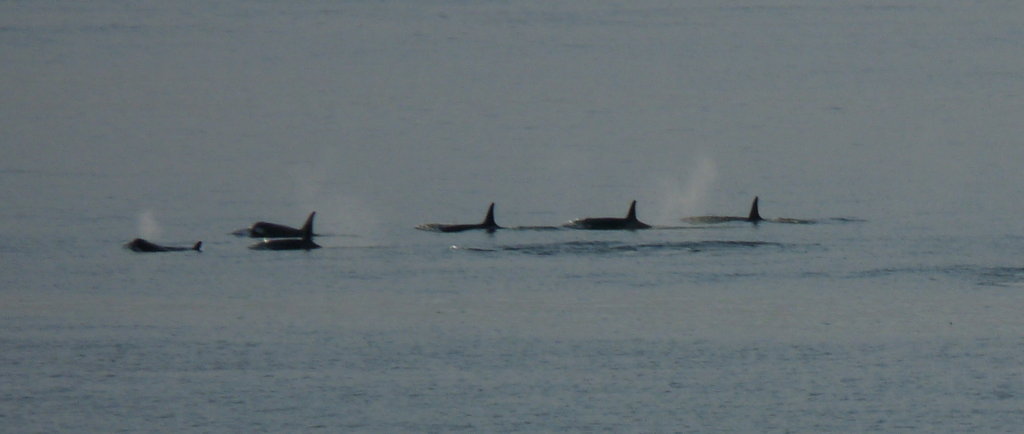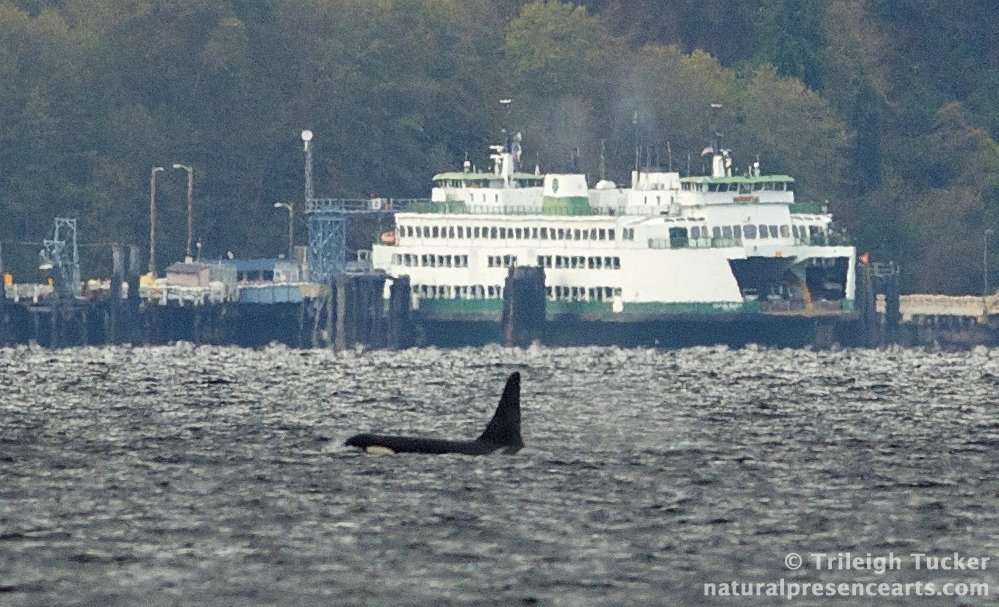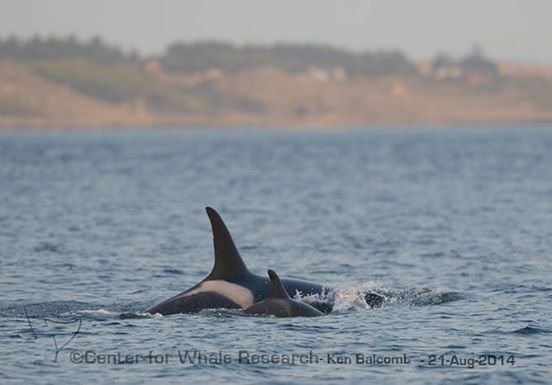By Susan Berta, Orca Network | Program Coordinator
Our last report discussed concerns about the decreasing number of Southern Resident orcas, down to just 78 in this endangered population of orcas after two deaths in L pod and no births in any of the pods since August 2012. Then, in early September, we were elated to discover a new calf for L pod, little L120, born to L86. This little calf gave us hope for the future of Southern Residents, but that hope was not long lived. By mid-October, the calf was determined to be missing and presumed dead, bringing the population back down to 78.
Between 1998 and 2013, one or more surviving calves have been born into the Southern Resident community of orcas every year, except for 2000 (though a calf was discovered in early January, 2001, that could have been born in December of 2000). Most years two or more calves were born, some years four or five calves have been born.
So two years with NO surviving calves does not bode well for the Southern Resident orcas. As we sponsor and attend meetings to discuss endangered Chinook salmon, which these orcas need to survive, we become more and more frustrated that researchers and agencies continue to argue about why this population is not recovering, and what actions need to be taken.
Dr. Lance Barrett Lennard stated it very well at a workshop yesterday - saying we can't wait until we prove the orcas need more salmon. We know they are not getting enough salmon, and we need to take the precautionary principle and do everything we can to save the salmon and the whales while there is still time. Lance, and John Durban of NOAA, have been doing photogrammetric studies of the Southern Residents with aerial photography, which clearly shows when whales are too thin, or whales that are pregnant. John will be doing a presentation about this research at our annual Ways of Whales workshop on Whidbey Island on Jan. 24, 2015, along with other presenters discussing different types of whales. It's a wonderful way to learn about the whales of the Salish Sea - join us if you can!
To leave you with some good news, we have had many great orca sightings in the inland waters of the Salish Sea since October, and through our Orca Network Facebook page and our Whale Sighting Network, we have enabled thousands of people to see and enjoy the whales from shore, or through photos and reports shared by those lucky enough to see the whales. To help get people to good viewpoints, Orca Network has produced a new map of Whale Sighting Viewpoints which has been very successful and popular.
The more people who get to watch the whales swim by our urban shorelines, the more they come to know and love them, and become advocates for them. We appreciate your support in making the Sighting Network possible, and hope you are one of the lucky ones who gets to see whales swim through your neighborhood soon!
Links:
Project reports on GlobalGiving are posted directly to globalgiving.org by Project Leaders as they are completed, generally every 3-4 months. To protect the integrity of these documents, GlobalGiving does not alter them; therefore you may find some language or formatting issues.
If you donate to this project or have donated to this project, you can receive an email when this project posts a report. You can also subscribe for reports without donating.




